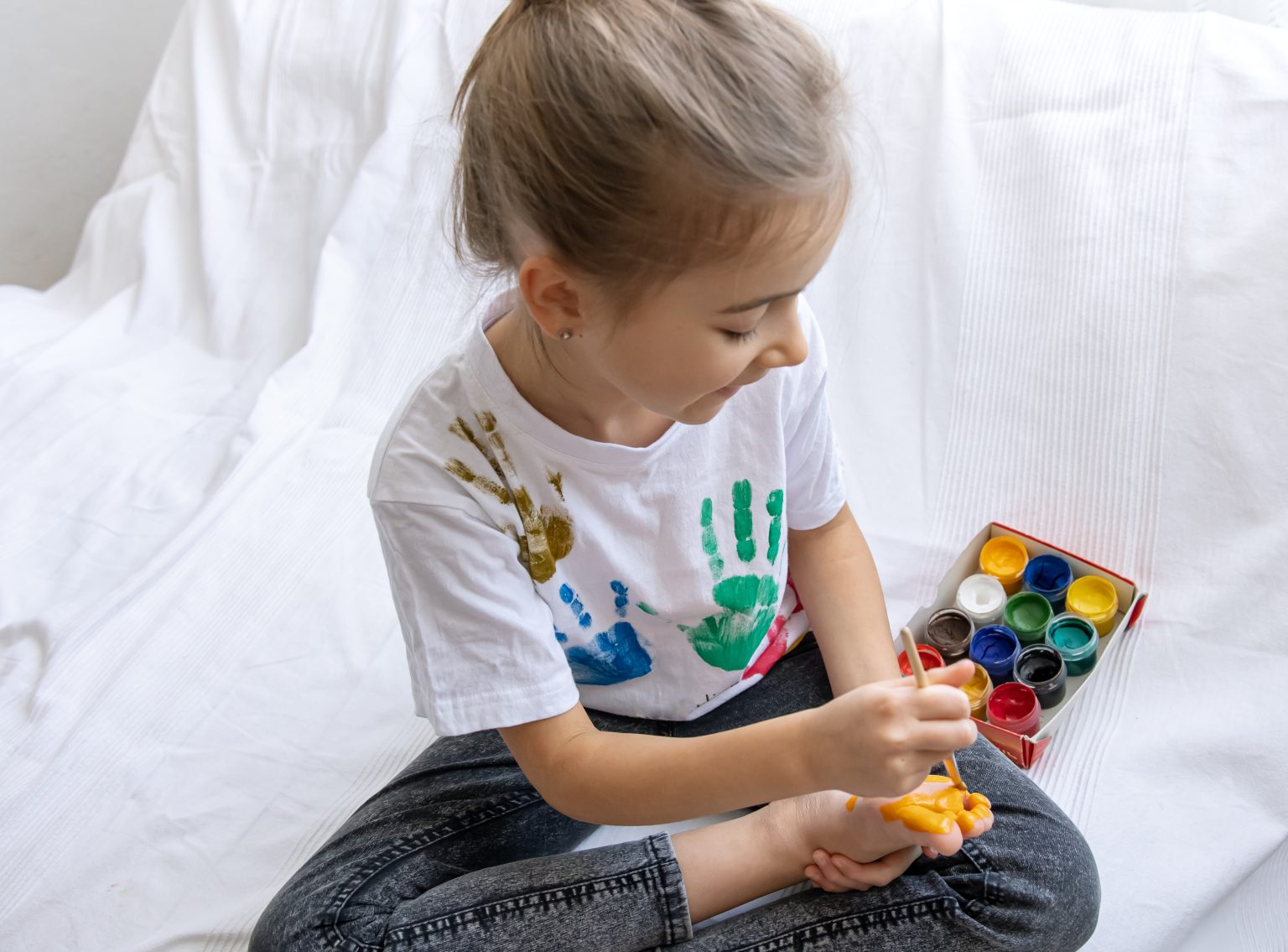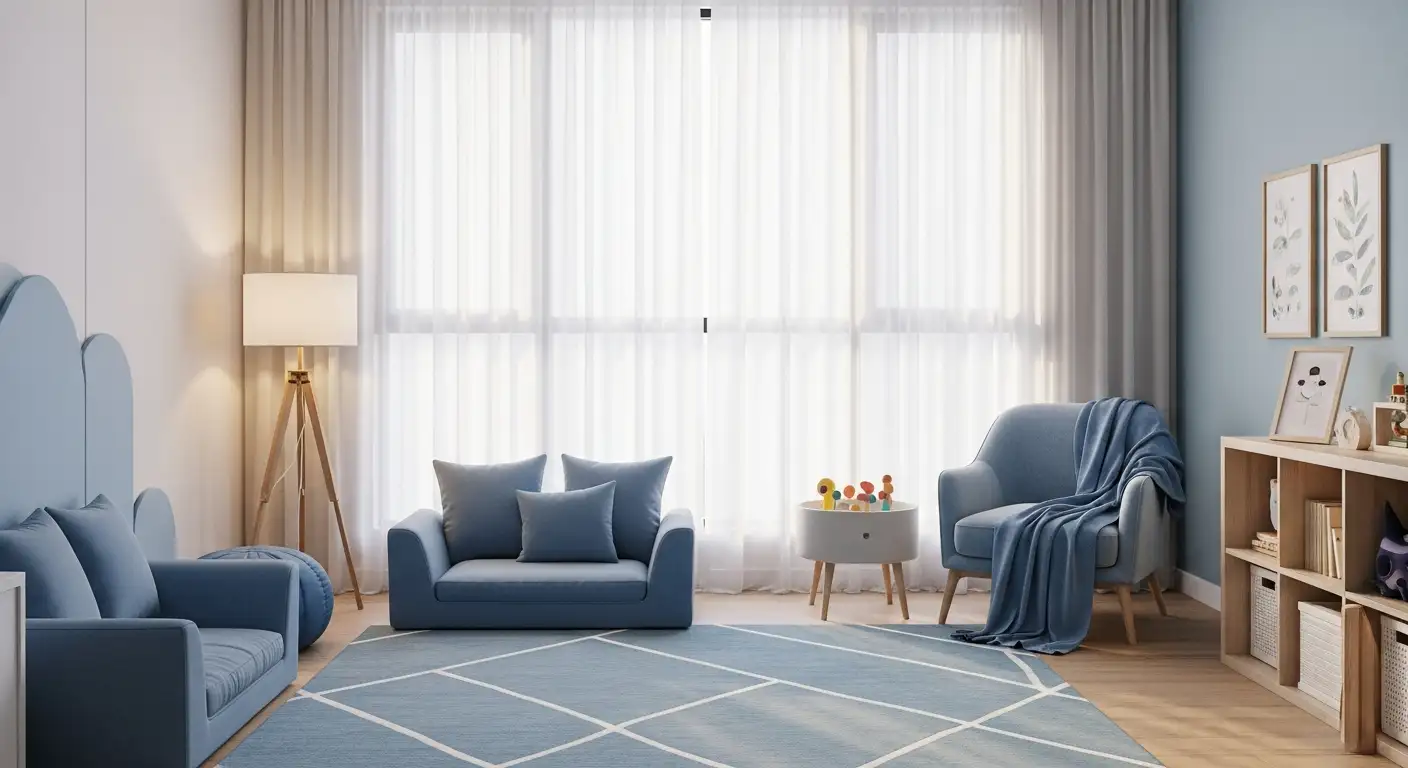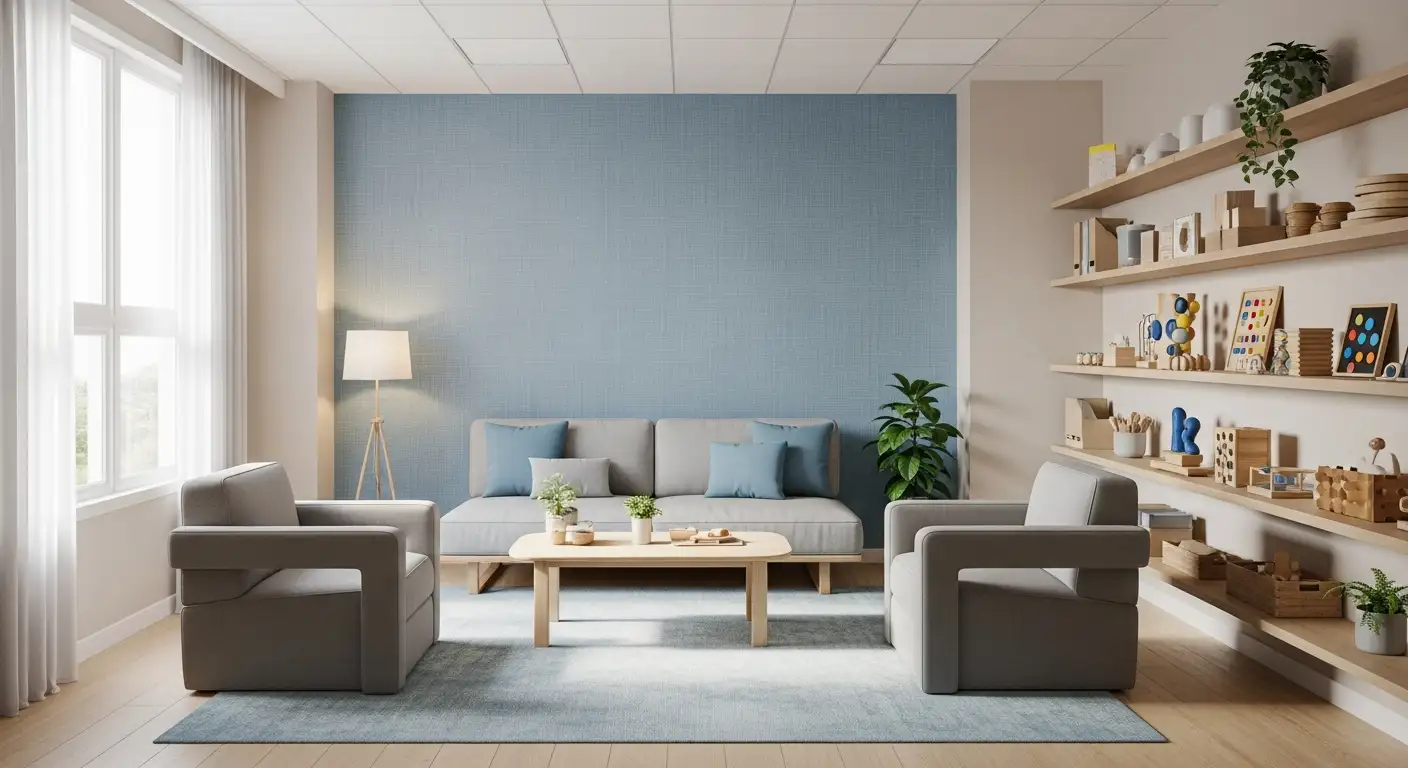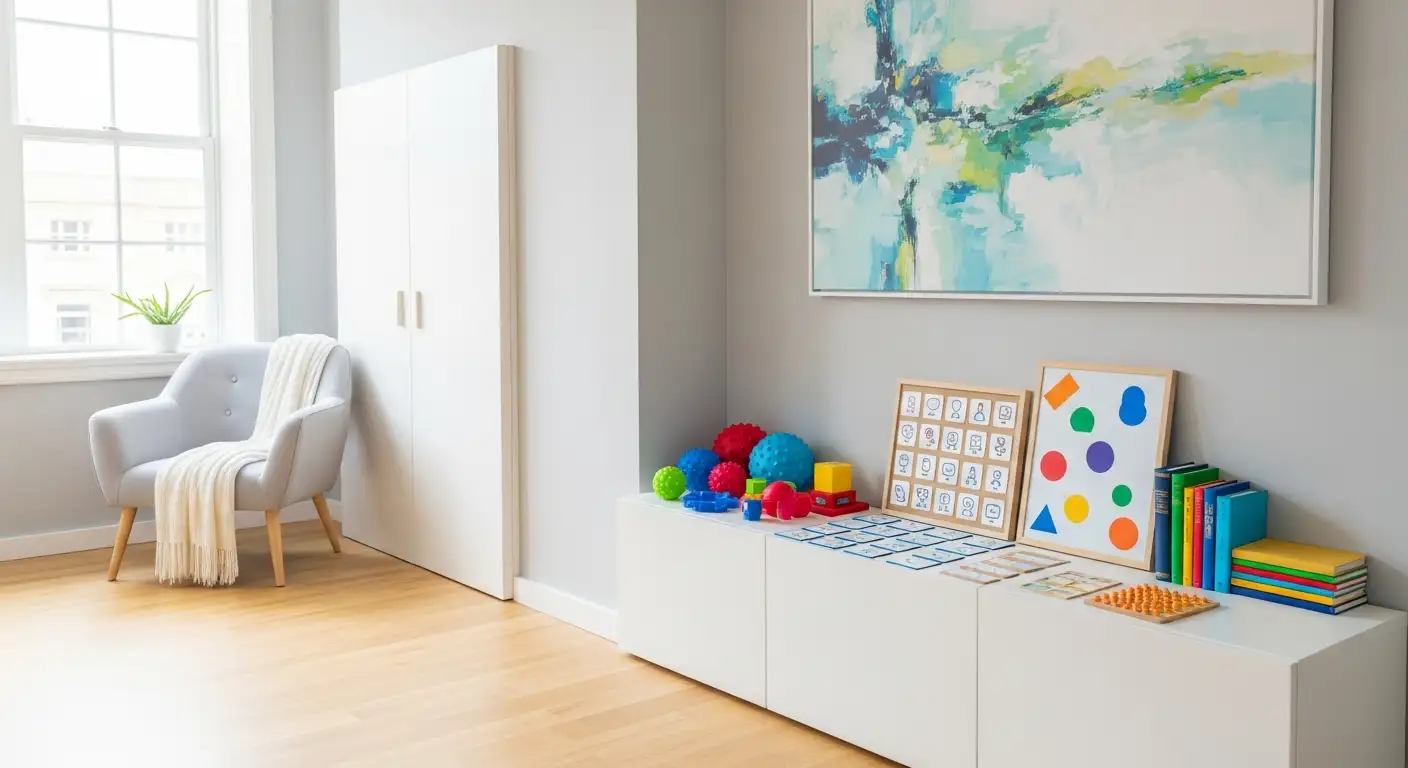
As a parent of a child on the autism spectrum, you are likely familiar with the unique and special qualities your child possesses. Autism, or Autism Spectrum Disorder (ASD), is often associated with challenges in communication and social interactions, but it also brings incredible strengths, including an ability to see the world from a fresh perspective. Many children on the spectrum possess intense focus, an eye for detail, and a deep capacity for creativity. The question is: how can parents like you foster and nurture this creativity and imagination in a way that suits the needs of autistic children?
This blog post will explore strategies and techniques that help unlock the potential for creativity and imagination in autistic kids. We'll cover everything from understanding how creativity manifests differently in autistic children to practical tips for nurturing imaginative play. By the end, you'll have actionable ideas to help your child flourish creatively in a way that is meaningful to them.
Understanding Creativity in Autistic Children
Creativity is not a one-size-fits-all concept. For neurotypical children, creativity often looks like imaginative play, drawing fantastical worlds, or inventing elaborate stories. For autistic children, creativity may manifest in different ways. They may engage in repetitive behaviors or exhibit a deep focus on a particular topic, but that does not mean they lack imagination or creativity. In fact, these behaviors can often be expressions of unique creative thinking.
Why Creativity May Look Different in Autistic Kids
Many autistic children prefer structure and routine, which can sometimes seem at odds with creativity, typically associated with spontaneity and unpredictability. However, the creativity of an autistic child often lies in their ability to think outside the box and their extraordinary focus on specific interests. While they may not engage in make-believe play in the same way neurotypical children do, their creative strengths may shine in areas like building intricate structures with blocks, designing patterns, or diving deep into a specific interest like trains, animals, or numbers.
Embracing and Understanding These Differences
As a parent, the first step to fostering creativity in your autistic child is to understand and embrace how creativity may show up differently. Accepting that their form of creativity doesn’t need to mirror what’s commonly expected allows you to appreciate the unique ways your child expresses their imaginative world.
The Importance of Creativity and Imagination in Child Development
Creativity is essential to a child’s development, regardless of whether or not they are on the autism spectrum. It promotes problem-solving, cognitive growth, emotional expression, and social interaction. For autistic children, creativity can also serve as a gateway to improved communication skills, allowing them to express feelings and ideas that they may find difficult to verbalize.
Fostering imagination also plays a crucial role in helping children understand the world around them. By engaging in creative activities, autistic children can practice flexibility, learn new ways to approach challenges, and explore different perspectives, all while having fun.
Strategies for Fostering Creativity in Autistic Kids
Here are several strategies that can help you nurture creativity in your autistic child while respecting their individual needs and preferences.
1. Build on Their Special Interests
Autistic children often have "special interests," which are topics or activities they are extremely passionate about. These interests can serve as a natural gateway to fostering creativity. If your child loves animals, for example, you can encourage them to draw their favorite animals, create stories about them, or build habitats using blocks or natural materials.
Tips for Encouraging Creativity through Special Interests:
- Create Art: If your child enjoys dinosaurs, for instance, you can offer them clay or playdough to mold their favorite dinosaur species.
- Storytelling: Ask them to tell you a story about their interest. For example, "What would happen if your favorite train visited a new city?" Let them guide the story in any direction they choose.
- Research Together: Use their interest to dive deep into learning and creative projects. Watch documentaries, create mini-museums in your living room, or embark on DIY projects around their passion.
By using their interests as a springboard, your child can explore creative activities while staying in their comfort zone.
2. Incorporate Nature-Based Play
Exposure to nature offers endless opportunities for creative and imaginative play. Nature is a sensory-rich environment that provides new textures, sights, and sounds for autistic children, many of whom have heightened sensory sensitivities.
Ways to Foster Creativity with Nature:
- Scavenger Hunts: Create a list of items for your child to find in your backyard or a local park. This encourages both observation skills and imagination as they explore and discover.
- Building with Natural Materials: Use leaves, rocks, sticks, or flowers to make art. Encourage your child to create patterns, structures, or even imaginary animals.
- Nature Stories: After a trip outdoors, ask your child to tell you a story about what they experienced. Even if they struggle with narrative skills, encourage them to describe what they noticed or liked best.
Being in nature can provide a calming environment for your child, and the freedom to explore allows them to engage their creativity in a relaxed and stress-free setting.
3. Provide a Sensory-Friendly Environment
Some autistic children can become overwhelmed by sensory input, which can make it hard for them to focus on creative tasks. Creating a sensory-friendly space can encourage them to engage in imaginative activities without feeling overstimulated.
Creating a Sensory-Friendly Creative Space:
- Minimize Distractions: Make sure the space is free of overwhelming sounds, bright lights, or strong smells that could interfere with your child's ability to focus.
- Use Soft Materials: Provide materials that are gentle on the skin, such as soft markers, non-toxic paint, or clay that doesn't stick to their hands.
- Offer Comforting Textures: If your child enjoys specific textures, like smooth pebbles or fuzzy fabrics, incorporate these into their creative projects.
By making sure the environment is suited to your child’s sensory needs, you create a space where they feel comfortable enough to let their creativity flow.
4. Encourage Free Play and Exploration
For many autistic children, structured activities are essential, but allowing space for free play is also crucial. Free play fosters imagination, allowing your child to experiment with new ideas and explore creative possibilities without the pressure of rules or expectations.
How to Encourage Free Play:
- Loose Parts Play: Offer your child a variety of loose parts—such as buttons, blocks, shells, or even old household items—and let them decide how to use them. This open-ended activity can stimulate their imagination as they figure out how to interact with these objects in unique ways.
- Limit Screens During Playtime: While screen time can be educational, it’s important to create time for unplugged, imaginative play where your child can be free from the confines of structured games or shows.
Allowing your child the freedom to play without boundaries gives them the opportunity to explore and develop their creativity naturally.
5. Support Art and Music Therapy
Art and music therapy are proven methods to help autistic children express themselves creatively. These therapies provide a safe, structured space for your child to explore their imagination through visual arts or sound.
Benefits of Art and Music Therapy for Autistic Kids:
- Express Emotions: Autistic children often find it difficult to express their emotions verbally. Art and music provide alternative outlets for self-expression.
- Enhance Communication: Non-verbal children or those with limited language skills can use art and music to communicate their thoughts and feelings.
- Improve Motor Skills: Activities like painting or playing instruments can help improve fine motor coordination, which can be particularly beneficial for children who struggle with these skills.
You can find certified art or music therapists who specialize in working with autistic children. Alternatively, you can introduce these activities at home in a relaxed, non-judgmental environment.
6. Use Visual Supports and Storyboards
Many autistic children are visual learners, which means they process information more easily when it’s presented in a visual format. You can use visual supports to help guide creative play or storytelling.
How to Use Visual Supports for Creativity:
- Storyboards: Create storyboards with pictures or drawings to help your child visualize a story. Let them choose the characters and guide the plot, or help them draw their ideas.
- Picture Cards: Use cards with pictures of objects, places, or characters to inspire creative play. Let your child choose a card and then make up a game or story based on the image.
Visual supports help structure the creative process, making it easier for autistic children to engage without feeling overwhelmed.
7. Provide Positive Reinforcement
Autistic children often thrive when given positive reinforcement. This doesn't mean showering them with praise for every little thing, but rather recognizing their efforts and progress in meaningful ways.
How to Reinforce Creative Efforts:
- Celebrate Small Wins: If your child builds a tower with blocks or completes a drawing, offer them praise or a small reward.
- Show Interest in Their Work: Ask questions about their creations, showing genuine interest in what they have made. This can encourage them to keep experimenting and trying new things.
- Avoid Overloading with Praise: While encouragement is important, avoid overloading your child with excessive praise, which can sometimes cause anxiety or make them feel pressured to perform.
Positive reinforcement fosters a sense of accomplishment and helps build your child's confidence in their creative abilities.
Helping Autistic Children Explore Imaginative Play
Imaginative play, also known as pretend play, is often more challenging for children on the autism spectrum. This is partly because imaginative play involves understanding other perspectives and abstract thinking, which can be difficult for some autistic children.
However, with the right support, many autistic children can learn to enjoy and engage in imaginative play. Here are some ways to help your child explore this type of creativity.
1. Model Imaginative Play
Your child may not instinctively know how to engage in pretend play, so modeling this behavior can be a helpful way to introduce them to the concept.
How to Model Imaginative Play:
- Use Toys to Act Out Stories: You can use dolls, action figures, or stuffed animals to act out simple stories. Show your child how the toys can "talk" to each other or go on adventures.
- Introduce Pretend Scenarios: For example, during bath time, pretend the rubber duck is a ship's captain, or while playing with cars, act as though they are racing to a finish line.
Modeling helps your child see how imaginative play works and gives them a structure to build upon.
2. Play Alongside Your Child
Rather than directing your child's play, try engaging in parallel play, where you both play alongside each other but follow your own creative impulses. This can help your child feel more comfortable with imaginative play because they can observe what you're doing without feeling pressured to copy it.
How to Use Parallel Play:
- Build Together: If you're using blocks, build your own structure while your child builds theirs. Comment on your creations or introduce a small storyline without expecting them to follow along.
- Collaborate on Art Projects: If you're drawing together, allow them to draw their favorite things while you create something separate. Offer gentle prompts like, "What if this animal could fly? What would that look like?"
Playing alongside your child helps reduce anxiety around imaginative play, allowing them to explore creativity at their own pace.
3. Use Social Stories
Social stories are short, simple stories that help autistic children understand different social situations. They can also be used to encourage imaginative thinking by helping your child navigate pretend scenarios.
How to Use Social Stories for Imaginative Play:
- Create Simple Stories: You can write or use pre-made social stories that introduce different characters and scenarios. For example, you can create a story about a trip to the zoo or a visit to outer space.
- Act Out the Story: After reading the social story together, act it out using toys, puppets, or even by dressing up.
Social stories provide a familiar and structured way for your child to explore imaginative play, making the process less intimidating.
How Double Care ABA Can Help Foster Your Child's Creativity
Every child is unique, and this individuality is especially true when it comes to how creativity shows up in autistic children. By acknowledging and embracing your child’s unique strengths and preferences, you can nurture their creative abilities in ways that are fulfilling and enjoyable for them. Creativity is not limited to conventional forms like drawing or pretend play—it can emerge through deep focus, structured activities, or special interests, all of which are valid and valuable expressions of imagination.
Whether through art, music, nature-based play, or simply encouraging your child’s favorite interests, there are countless ways to promote creativity and imagination. The key is to create a supportive, sensory-friendly environment where your child feels free to explore, create, and express themselves at their own pace.
At Double Care ABA, we understand the importance of nurturing creativity in children with autism. Our specialized services focus on incorporating nature-based exposure and play into therapy, helping children engage with their imaginations in a way that feels natural and comforting to them. If you’re interested in learning how we can help your child thrive creatively and emotionally, don’t hesitate to reach out. Together, we can foster a world of creativity where your child can flourish.














